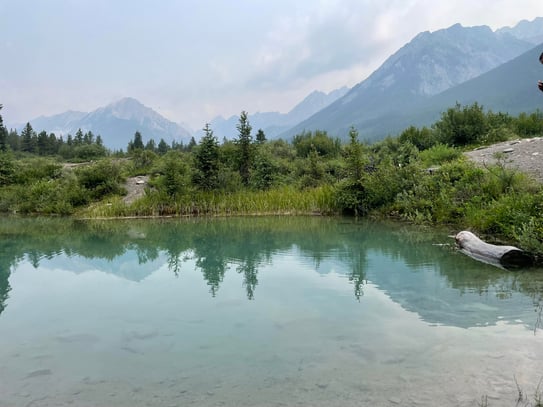
There's something magical about venturing into the great outdoors and experiencing the awe-inspiring beauty of national parks. This June, I took my 10-year-old brother and a friend to Yellowstone National Park, the USA's first national park, just a stone's throw away from our home. Having visited the park as a child and young adult, I wanted to introduce my brother and our friend to the park's breathtaking landscapes, abundant wildlife, and unique geological features.
A few short weeks after visiting Yellowstone, I set off to Banff National Park, Canada's first national park. My S.O and I spent three days and two nights backpacking in Banff after visiting the Canadian Badlands.
Although separated by borders, Yellowstone and Banff share many similarities. Nestled in the Rocky Mountain Region of the western United States and western Canada, both parks boast majestic mountain ranges, pristine forests, and crystal-clear lakes. They are magnets for adventurers and nature enthusiasts from across the globe, drawing millions of visitors each year. As you can imagine, millions of footsteps and millions of memories can take a toll on our parks and their staff.
Good stewardship is essential to preserve these parks and their habitats for future generations. Below are a few tips to make your visit to our parks fun, memorable, and responsible.
-
Stay on designated trails: Stick to marked trails to minimize your impact on fragile ecosystems. Straying off the path can damage vegetation and disturb wildlife habitats.
-
Leave no trace: Practice responsible tourism by leaving no trace of your visit. Pack out all your trash, dispose of waste properly, and avoid leaving any litter behind. Leave the park as pristine as you found it.
-
Respect wildlife: Maintain a safe distance from wildlife and observe them from afar. Do not approach or feed them, as this can disrupt their natural behavior and endanger both animals and visitors.
-
Follow park regulations: Familiarize yourself with the park's rules and regulations before your visit. This includes guidelines for camping, fishing, and other activities. Adhering to these rules ensures the safety of visitors and the preservation of the park.
-
Be prepared: Before embarking on hikes or other outdoor activities, ensure you are adequately prepared. Carry essential supplies such as water, food, appropriate clothing, and navigation tools. Familiarize yourself with the trail and weather conditions to make informed decisions.
-
Let someone know your plans: Inform a trusted person of your itinerary, including the trails you plan to hike and your expected return time. This precaution ensures that someone is aware of your whereabouts and can seek help if needed.
-
Practice fire safety: If allowed, only start fires in designated fire pits or grills. Make sure to fully extinguish fires before leaving the area to prevent the risk of wildfires.
-
Preserve natural and cultural artifacts: Avoid touching, removing, or disturbing natural and cultural artifacts within the park. These treasures provide valuable insight into the park's history and should be preserved for future generations to appreciate.
-
Educate yourself: Take the time to learn about the park's unique features, flora, fauna, and history. Understanding the significance of the park enriches your experience and deepens your appreciation for its natural wonders.
This blog was written with the help of ChatGPT.

-1.png)
